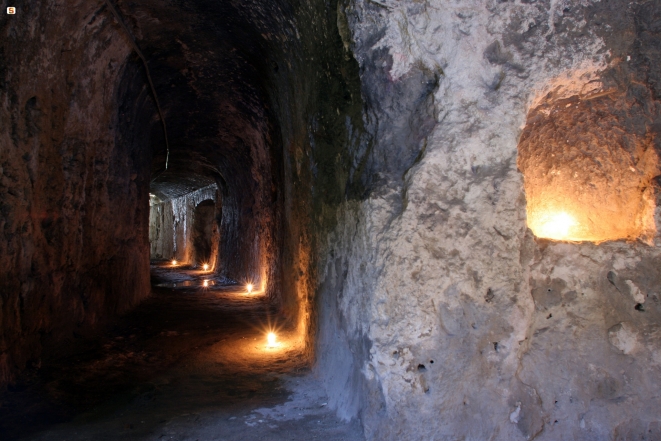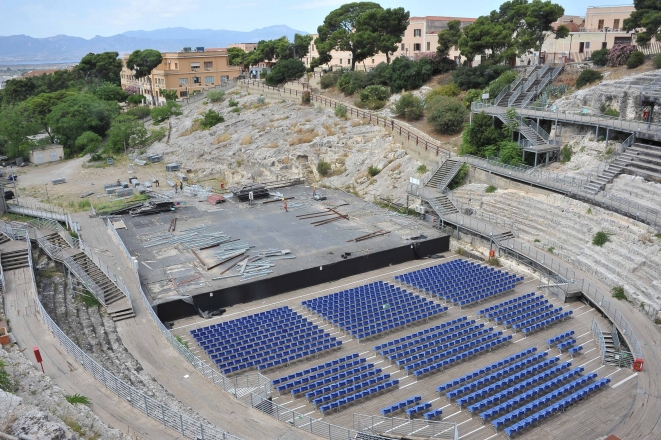S'ingurtidroju: the sink hole
The legendary cavity of the Roman Amphitheatre of Cagliari
Along the slope of the hill of Buoncammino, in the small natural Palabanda valley, facing the Capuchin Church of St. Anthony of Padua, stands the structure composed of large steps carved into the rock that surrounds the central elliptical space, the arena.
It was built as a place of executions, of fight between men and wild animals and between gladiators. What looks like a prestigious archaeological asset to be preserved, hides an ancient legend inherent an ambiguous vertical depth cavity which is grafted into the ground, almost passing unnoticed, but present and significant.

It is the sink hole, s'ingurtidroju, centuries old deep underground cavity with an outside escape in the front stairs compared to the Civil Hospital and viale Sant' Ignazio below.
A simple well which has given rise, since ancient times, to the arcane legend of a hole that opens in the subsoil for about ten meters and it is intended to suck up animals and people, not for the mere purpose of death, but for the specific purpose to satiate the one who reigns over demons and owns dominion on flies, that is Beelzebub.
The demon, worshiped by the Philistines, waited undisturbed the fall, chance for himself but deadly for the victims, of living creatures, simple food to delight his days aimed at execrate any benevolent manifestation of the Divine Will.
About the performing way of these hellish meals, we can know nothing, but in the popular imagination the disastrous fall in the dark sinkhole could well be referred to Dante's description of Lucifer, that, for the incomparable poet, Beelzebub is nothing but an alternative name of the principle of every evil.

Dante's Lucifer is characterized by having three creepy faces on a single head, to symbolize the opposition to the Divine Trinity, the price of betrayal of its creator. In each side, one black for impotence, the other red from hatred and the last yellow for ignorance, there is a mouth with which "the Anti-God" feeds himself with three sinners: Brutus, Judas and Cassius.
A frightening description, but detailed, that could concretely moderate the curious interest of the people related to the satisfaction of hellish hunger for what, according to the legend, was born the sinkhole of the Roman Amphitheatre of Cagliari. If only the poor unfortunates knew, promptly, that their tormentor resented the Christian creed, they could have been saved through the recitation of Catholic prayer.
If the myth tells, the history and archaeological studies show that the building was designed an impressive system of channeling rain water to make it suitable flow back into special tanks. By virtue of its structure or cone-shaped funnel, the need for drainage of rainwater has been primary in order to avoid the flooding of the site.
So, a sink hole, the amphitheater one, dug to air an underground tunnel, made by the epic Sardinian traditions a path to hell, a trap for animals and humans, by evil connotations.
Actually, the Roman amphitheater of viale St. Ignazio is open from Friday to Sunday and all public holidays from 09:00 to 18:00, even if reservation is required for guided tours.
There you can see, watching it, if the legend of the sink hole hits the more superstitious or just shows the importance that it has, as cultural assets placed among the most valuable public buildings of the period of the Roman domination in Sardinia.